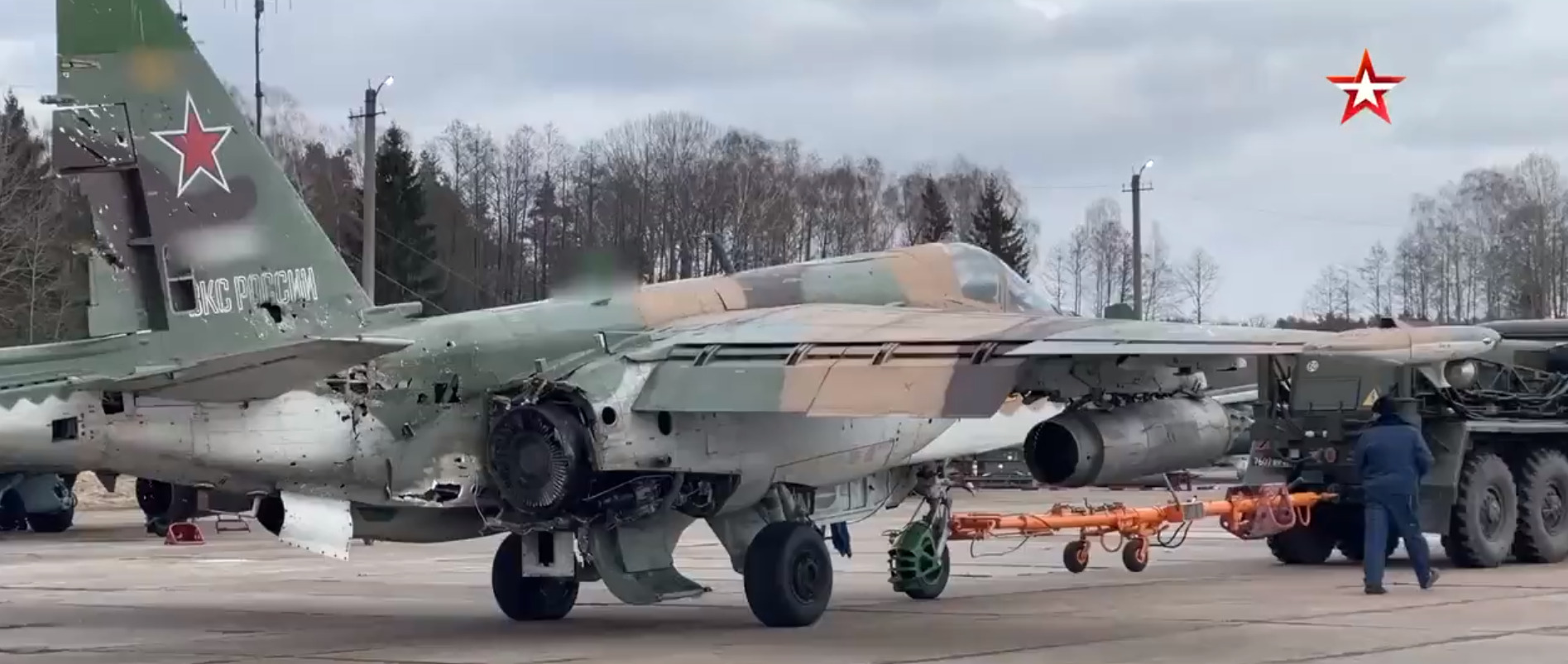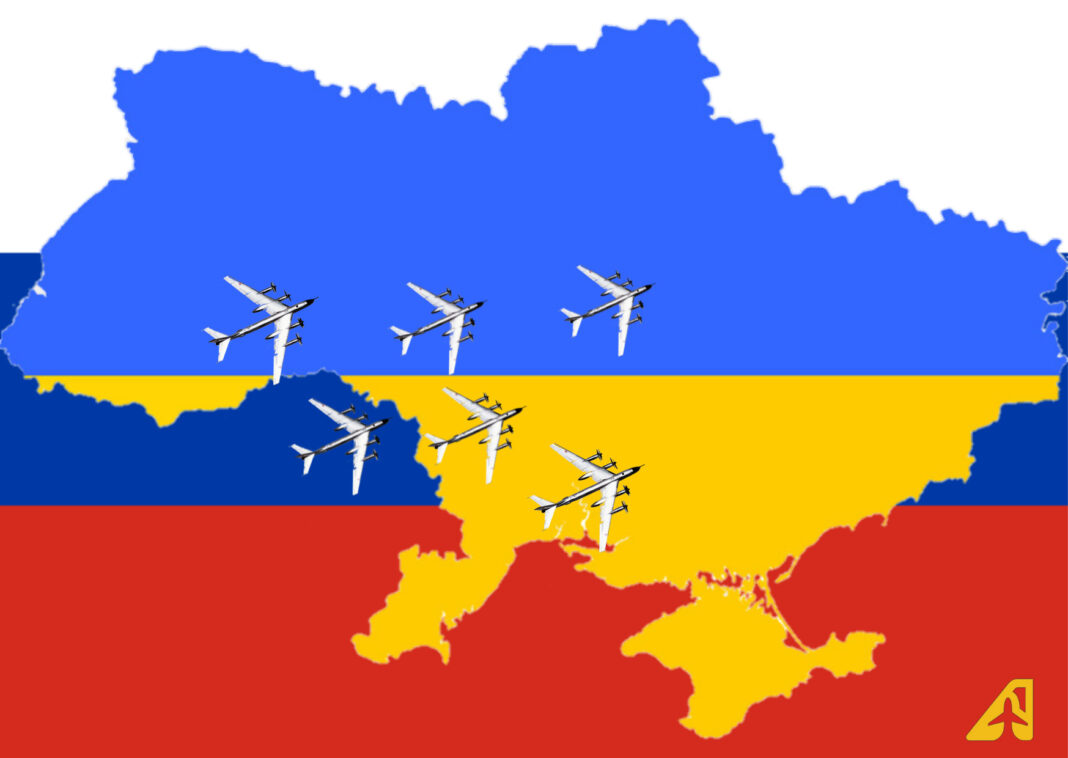February 24 marked one year (perhaps only the first) since the start of the Ukrainian war, which began in the early morning of February 24, 2022 with a veritable rain of cruise missiles, ballistic missiles and aviation attacks on Ukrainian command centers, arsenals, airfields, bunkers and air defense systems, preceding the ground invasion and heliborne assaults.
After the rapid advances of the Russian forces during the first weeks of the conflict, and subsequent withdrawal in the face of the successful Ukrainian counterattack, the situation on the front is, today, quite stabilized, with no major territorial gains and losses for either side.
Most of the operations are taking place in and around the Dombass territory. The struggle continues to be fierce, while Russia is trying hard to regain the initiative and is attempting to achieve «minimum» objectives to satisfy the Kremlin’s demands, the Ukrainian forces continue to put up fierce resistance in the front line and are preparing new combatants and fresh material in the rear to try to regain the initiative.
It is a moment of a certain pause, where both sides seem to be «catching their breath» to prepare for the next phase of this conflict, which has turned into a war of attrition, with an end that is not yet in sight. And therefore, it is a good time to try to make an analysis of the characteristics, tactics and forms of employment of the weapon systems used on the front, because the Ukrainian war has certain differential characteristics that distinguish it from other contemporary armed conflicts.
Modern warfare with classical elements
On the Ukrainian battlefields we can see such classic tactics as the widespread use of fortified positions and trenches, while using all kinds of unmanned vehicles to harass and defeat the soldiers occupying them.
Armored vehicles and artillery pieces from the 1960s onwards are used, but many of their targets are selected using drones or by the most advanced electronic intelligence systems.
Drones
This is how the Ukrainian military is attacking the Russians
From tanks to soldiers in their trenches
Anything that’s going to set back the occupiers #UkraineRussiaWar #StandWithUkraine Ukraine War #NATO #kyiv #UkraineFrontLines #Ukraine pic.twitter.com/9Ur3leDger
— Luis (@2536luis) February 22, 2023
The anti-aircraft systems used by Ukraine are also a mixture of equipment, some of them 40 or 50 years old, and others so modern that they have only been deployed for a brief time in the armies of the Western countries that provided them. And all of them have been proving sufficiently effective to produce a serious number of shoot-downs of Russian aircraft and force a change of tactics.
European Afghanistan
What Russia began by calling a «special military operation», in the hope of transforming it into a quick and resounding victory that it could present to the world as a consummated fact, ended up turning into a war that has completed its first year of furious life. And this is largely due to the growing military intervention of Western countries and NATO in particular.
This intervention in favor of Ukraine came in the form of military assistance, provision of huge intelligence resources, expert advice, training for new Ukrainian troops, and so on. Without this assistance, despite the effort and courage shown by the defenders, it is clear that Kiev would have capitulated long ago.
The very dynamics of this conflict and the various interests at stake on one side or the other, ended up transforming Ukraine into the battlefield on which Russia has been stuck for a year, in which a proxy war is being fought between the Western bloc and the Eastern bloc. And this configuration is becoming more and more evident every day.
War at hand
For taking place in the era of digital communications and in a European country, this is the war with the greatest global repercussions of the last decades. Information (and propaganda) is at the fingertips of the vast majority of the world’s population, thanks to cellular phones. And this in itself is also one more weapon in the arsenal available.
There is an endless amount of audiovisual documentary material on the development of the conflict, updated minute by minute, and available to everyone on the various social networks where soldiers and civilians (mainly Ukrainians) upload evidence of their victories or the consequences of the enemy’s actions. Thanks to this, we were able to see how the tactics of each side evolved as new technologies entered the scene, such as Javelin anti-tank missiles, the most modern Russian cruise and ballistic missiles, HIMARS rocket launchers or the different unmanned systems.
Some key lessons from the Ukrainian war
The above characteristics, both modern and classical, in their combination on the Ukrainian battlefield; and the easy access to information provided by social networks (clearly with a pro-Ukrainian bias, as they upload the most material), make it interesting, useful and necessary to try to draw some conclusions and lessons from this war, as it probably anticipates the form that high-intensity conflicts will take in the years to come.
Achieving air dominance takes time
The ground attack and hand strikes by heliborne forces (such as the seizure of Hostomel airport near Kiev, where the An-225 was drestoyed) was preceded by a massive Russian air and missile attack, which managed to momentarily knock out the Ukrainian air defense in the first days of the conflict. However, the clear Russian air superiority was not properly exploited as the weeks and months of the war passed.
Although many air bases, anti-aircraft systems and command centers were put out of service, the destruction inflicted was not so great as to neutralize the Ukrainian response capability. Russia did not devote the necessary time and resources to achieve air dominance. Not all airfields were hit, and those that were, not enough to render them inoperable. Long-range area defense systems such as the S-300s inherited by Ukraine from the Soviet era were priority targets, but mobile medium- and short-range systems are difficult objectives to hunt and were able to continue operating to this day, becoming a thorn in the side of the Russian Air Force (VVS).
Although Russian Su-35 air superiority fighters carry Kh-31P Krypton anti-radar missiles, their effectiveness as a means of suppressing air defenses (SEAD/DEAD) is not comparable to that of advanced dedicated systems, such as the American EA-18G Growler. It is no coincidence that versions of the Eurofighter and Rafale are being planned with capabilities analogous to those of the US fighter.

Moreover, the surviving Ukrainian fighter aircraft, approaching their targets at very low altitude, continue to support the defenders on the ground. This could be evidence that Russia does not have an adequate number of airborne early warning and control (AEW&C) aircraft operating over the theater of operations, otherwise most of the Ukrainian attacking aircraft could have been detected and neutralized in time.
Air and satellite intelligence assets, of which NATO has many and whose information helps daily to multiply the effectiveness of Ukrainian military actions, are essential force multipliers in modern warfare. Russia, for its part, also appears to be at a significant disadvantage in this matter, because it was unable to take advantage of its air superiority to hunt down and destroy Ukrainian aircraft that are deployed using dispersed operations tactics (something in which the Gripen excels), nor many of the enemy’s troop concentrations and ground assets.
Therefore, one of the lessons is that establishing air superiority over the battlefield requires continuous combat actions over time and the use of specialized means that allow for a lasting decrease in the adversary’s air defense capability.
The great risk of flying low
Even if air superiority over the theater of operations is achieved (something not within the reach of any but the best equipped Air Forces), there remains the undeniable danger posed by the proliferation of shoulder-launched anti-aircraft missile systems (MANPADS).
Man-portable anti-aircraft missile systems are an indispensable tool of low-level defense, designed to be, along with tube weapons, the last line of defense against enemy aircraft, within a multi-layered integrated air defense structure. Russian helicopters and ground attack aircraft proved particularly vulnerable to these threats, because of their need to operate at low altitude, well within the effective range of these weapons.
All footage from the Russian airborne helicopter assault into Gostomel airbase on the outskirts of Kyiv during the first days of the invasion. Includes new MANPADS launch and shootdown fotage. Multiple Ka-52 helicopters hit and shot down pic.twitter.com/Ui8J8bzI8O
— Hugo Kaaman (@HKaaman) March 1, 2022
Most of the downed Russian aircraft fell victim to MANPADS deployed by Ukrainian soldiers. They even proved effective weapons for shooting down cruise missiles, drones and loitering munitions.
The danger of operating below 5,000 meters (usually the maximum ceiling of modern MANPADS) and the short reaction time left for the attacked aircraft to defend themselves, forced Russian planes and helicopters to make doctrinal changes that increased their chances of survival, but drastically decreased their combat effectiveness.

Faced with an enemy that deploys sufficient low-level air defense assets, it is essential for combat aviation to have long-range precision munitions and adequate optical detection and targeting capabilities to be able to attack enemy positions from relatively safe ranges.
On the other hand, the Japan Self-Defense Forces also drew lessons from the war in Ukraine, which led them to rethink the validity of attack and observation helicopters in future war scenarios -given the great effectiveness shown by MANPADS against this type of aircraft- and they are seriously considering replacing them with unmanned aerial systems (UAS).
Drones are here to stay
While the experiences in northern Syria and the war in Nagorno Karabakh highlighted their growing importance in modern conflicts, the use made by Ukrainian forces of unmanned vehicles shows that they have become essential weapon systems and powerful force multipliers.

Drones of all types, both military and civilian, were used with great effectiveness to obtain intelligence, to destroy war hardware and equipment (usually much more expensive than the drone itself) and to harass Russian troops, who could no longer feel safe even in their own trenches, both day and night.
Moreover, during this conflict there were novel uses that the Ukrainians made with their drones, such as the first successful anti-surface mission performed by an unmanned aircraft, or the first search and rescue (SAR) mission performed by a Ukrainian drone, to recover another downed drone, or the first aerial combat between drones.
WW1-style duel. Ukrainan Mavic-drone, which we have delivered to one of the airborne units in Donetsk region, destroyes russian opponent. Amazing!
Pls support our Armed Forces: https://t.co/nw19NpRIN6 pic.twitter.com/2vaCBQINQK— Serhiy Prytula (@serhiyprytula) October 13, 2022
Even Russia took note of the effectiveness these devices showed against its forces, and began to deploy them. Of particular relevance is the import of large numbers of Iranian suicide drones to attack critical infrastructure, or the arrival on the battlefield of the Lancet, a Russian loitering munition that is proving effective in destroying Ukrainian armor, artillery and air defense systems.
#Ukraine: Two Ukrainian M777A2 155mm towed howitzers were destroyed and one more damaged by Russian Lancet loitering munitions allegedly in the vicinity of Kreminna, #Luhansk Oblast. pic.twitter.com/Knx1EsC5Sm
— ???????? Ukraine Weapons Tracker (@UAWeapons) January 26, 2023
Unmanned systems are proving, particularly in Ukraine, to be indispensable tools in today’s battlefield, given their unmatched cost/benefit ratio, accessibility (such as the Bayraktar TB2s purchased with money donated by the Lithuanian population) and adaptability of use. Unlike traditional large weapon systems, such as attack aircraft, reconnaissance aircraft or helicopters, which are expensive to acquire and operate, drones represent a disruptive technology because they are within the reach of most combatant forces and provide many capabilities at a low cost, while optimizing the use of existing legacy weapons.
Intelligence, command and control and communications
The means of obtaining enemy intelligence are the «force multiplier» par excellence, and if there is one aspect in which the Ukrainian Armed Forces stand out from the Russian ones, it is in the area of rapid access to large volumes of intelligence information.
NATO provided Kiev with a multitude of intelligence gathering systems of all kinds, and with it, a large number of analysts who work day and night to anticipate the movements of Russian forces, as well as to find and exploit their vulnerabilities. Armed with this knowledge, assisted by NATO military advisors and resupplied by a growing influx of modern Western weapons systems, such as HIMARS, loitering munitions, etc., the Ukrainian defenders were able to resist the Russian onslaught, regroup and counterattack with surprising effectiveness

From the ordinary citizen who uses his cell phone to film and upload to social networks the movements of troops passing through his neighborhood, to the aerial resources that record enemy communications and radar signals, to the million-dollar observation satellites circling the Earth, the gathering of intelligence information is an activity that takes place in all domains (space, cyber, electronic, etc.) and once processed, allows military commanders to make decisions that result in the most cost-effective use of their forces.
In closing
The aspects mentioned above represent only some of the many edges that can be analyzed of the complex scenario offered by the Russo-Ukrainian war. And there are undoubtedly many more lessons that military analysts will be drawing from this conflict for years to come. But I tried to present the ones that seemed to me the most relevant, since in Ukraine there is a combination of elements (both weapons and tactics) representative of both classical and modern warfare, which will surely have a significant influence on procurement policies, doctrine and the shaping of the armed forces of the future.







Muy bien a leer
Un poco tendenciosa la nota. El An-225 fue destruido cuando las fuerzas rusas tenían el control del aeródromo. Por lo tanto no habría razón para su destrucción, en cambio si por parte de Ucrania que en los albores de este conflicto atacaba sin la ayuda táctica de la OTAN